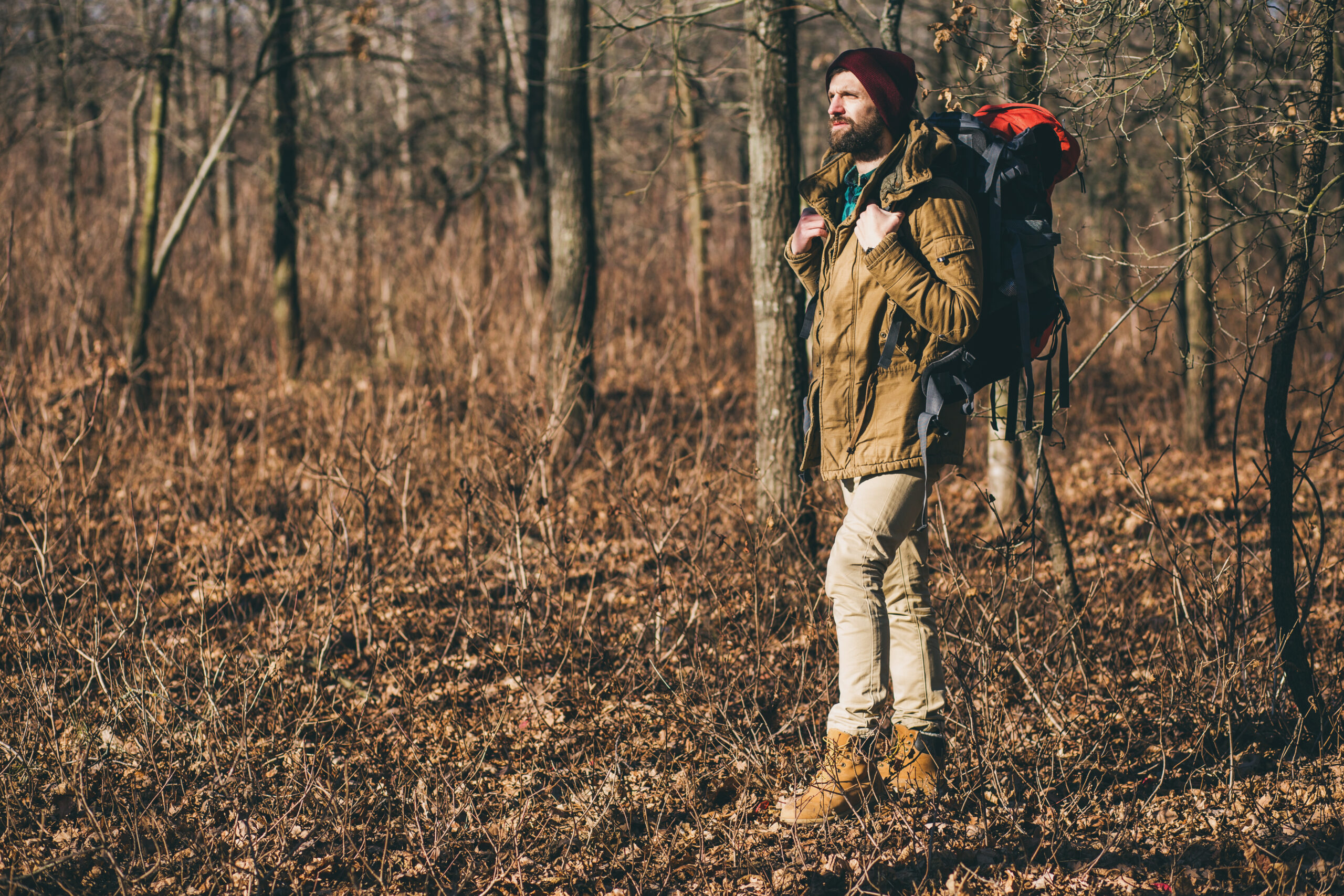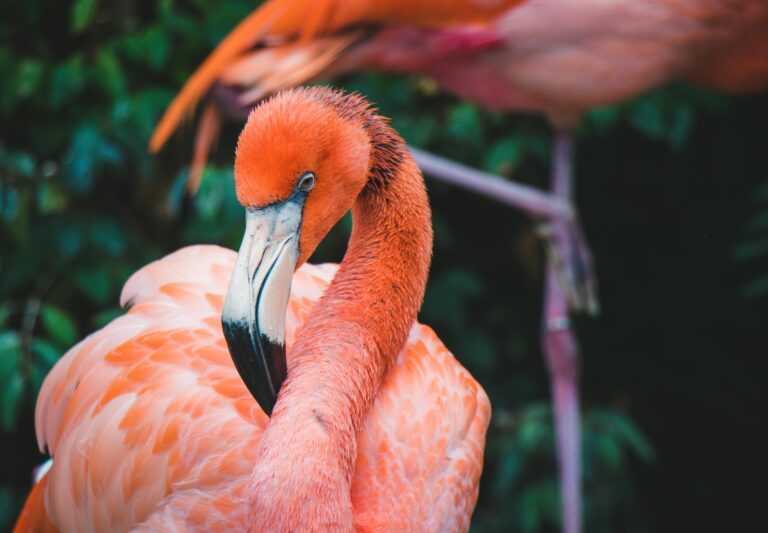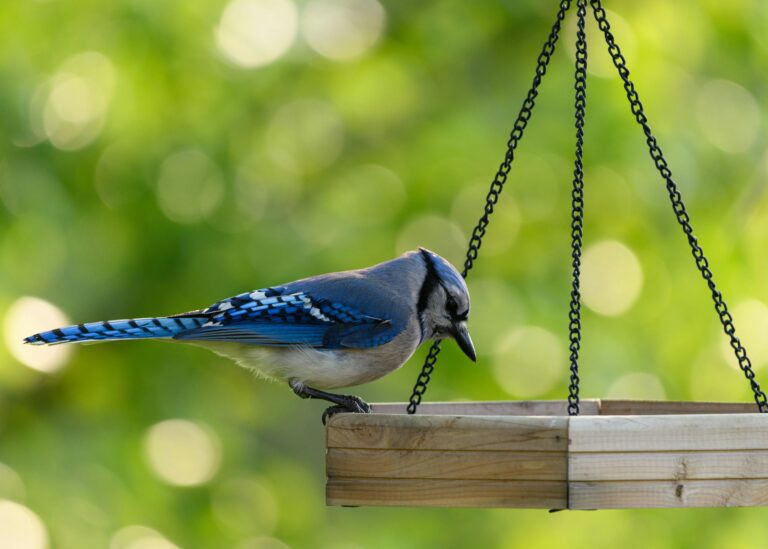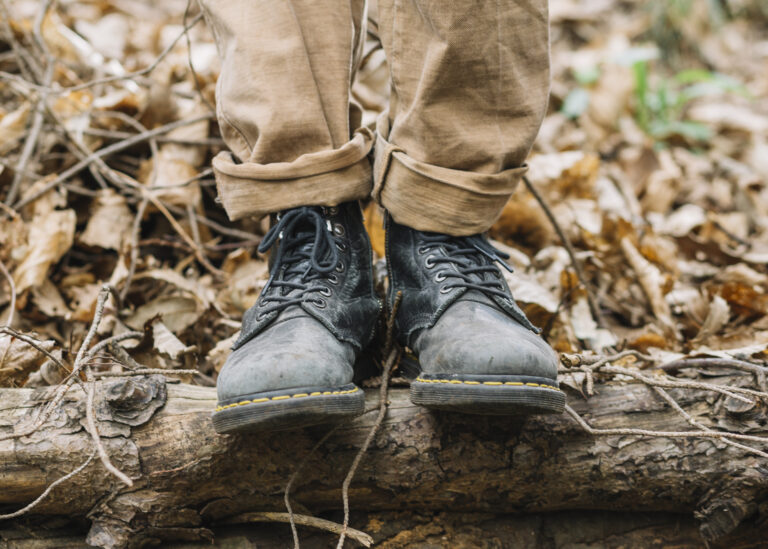The 10 Best Upland Hunting Jackets for Men in 2025
When you’re chasing pheasants across a frosty field or flushing quail in tall grass, the right jacket can make all the difference.
Upland hunting demands outerwear that keeps you warm, dry, and mobile without weighing you down.
In 2025, manufacturers have stepped up with jackets that blend traditional durability with modern features like waterproof fabrics, breathable linings, and cleverly placed pockets for shells and gear.
In this guide, we’ve handpicked the top upland hunting jackets for men, tested for comfort, protection, and performance in real hunting conditions.
Whether you hunt in cold northern winters or mild southern fields, you’ll find an option here that matches your style and needs.
1. Orvis Men’s PRO ToughShell Waterproof Jacket ($349-$398)

During a rainy Kansas pheasant hunt, the Orvis ToughShell kept me dry with its waterproof nylon shell and sealed seams. Stretch fabric and articulated elbows ensured fluid shotgun swings, while 1,350 sq. in. of blaze orange made me visible.
Magnetic-closure pockets and a low-profile game pouch held shells and three roosters. Orvis’s site reviews praise its thorn resistance, though some want more colors. It’s a premium pick for rugged conditions.
Pros: Waterproof, thorn-resistant, excellent mobility, spacious storage.
Cons: Limited color options, higher price.
Best For: Hunters in wet, thorny environments needing durability.
2. Beretta Men’s Upland Light Jacket ($250-$300)

Beretta’s cotton-spandex Upland Jacket shone on a warm October quail hunt. Its ergonomic tailoring fit my shoulders perfectly, allowing quick shots without snagging.
The water-repellent mesh lining kept me dry in drizzle, and blaze orange panels ensured safety. Amazon reviews love its comfort but suggest sizing up for layering. The double-entrance game pouch is smaller but functional for light loads.
Pros: Lightweight, breathable, ergonomic, visible.
Cons: Less waterproof, smaller pouch.
Best For: Warm-weather hunters prioritizing agility.
3. Gamehide Rooster Upland Hunting Jacket ($200-$250)

The Gamehide Rooster was my budget-friendly choice for a Missouri quail hunt. Its woven cotton and polyester trim resisted briars, and massive nylon game pouches held gear securely.
Shell loops and a water bottle holder were practical, though it’s only water-repellent, per Gamehide’s site. The marsh brown-orange colorway ensured visibility. It’s ideal for casual hunters on a budget.
Pros: Affordable, large pouches, secure storage, comfortable.
Cons: Not fully waterproof, less durable.
Best For: Budget hunters for short trips.
4. Carhartt Men’s Upland Field Jacket

Carhartt’s 8.5-oz Quick Duck canvas jacket balanced durability and weight during an Iowa hunt. Its wraparound game pouch held three roosters, and water bottle pockets kept me hydrated.
Adjustable cuffs blocked wind, but the blaze orange isn’t water-repellent, per Amazon feedback. The padded shoulder eased recoil, making it great for long days.
Pros: Durable, lightweight, ample storage, wind-resistant.
Cons: Partial repellency, limited insulation.
Best For: Versatile hunters needing hydration options.
5. Browning Upland Jacket
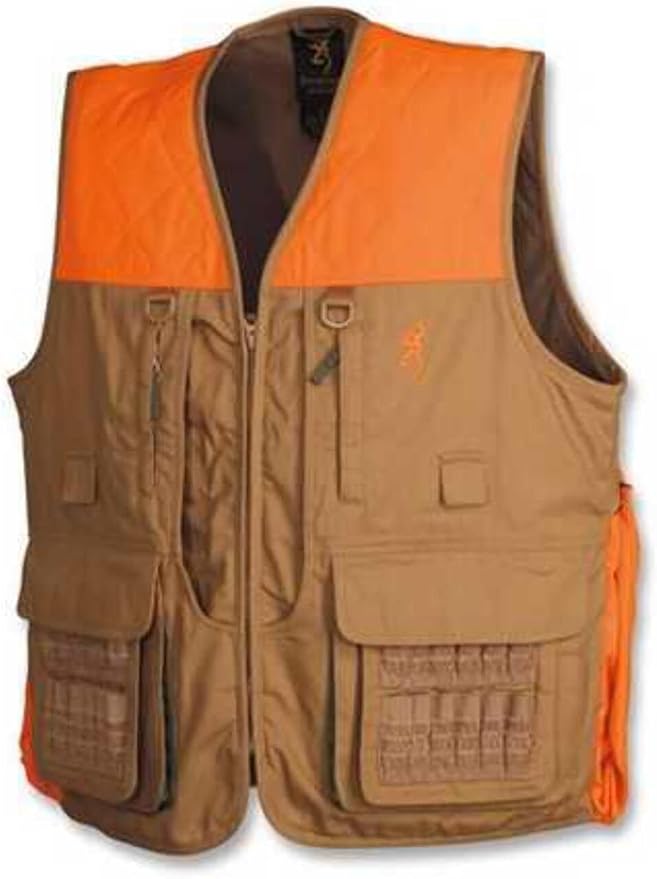
Browning’s polyester jacket kept me warm in a chilly Nebraska hunt. Its non-fading blaze orange met safety standards, and the blood-proof game pouch held five pheasants, cleaning easily.
D-rings for dog accessories were a training bonus. The storm flap over the zipper kept moisture out, though it lacks a hood, per MidwayUSA reviews.
Pros: Warm, durable, large pouch, hunter-friendly features.
Cons: No hood, minimal insulation.
Best For: Cold-weather hunters needing storage.
6. ArcticShield Men’s Glacier Eclipse Jacket

ArcticShield’s Glacier Eclipse warmed me during a snowy Montana hunt with its heat-retention tech, reflecting 90% of body heat. The waterproof nylon shell and fleece liner handled harsh weather, while underarm vents and a detachable hood ensured breathability. Amazon reviews note its weight but praise warmth. Zippered pockets kept gear organized.
Pros: Insulated, waterproof, breathable, detachable hood.
Cons: Heavier, less versatile for warmth.
Best For: Cold-weather hunters needing warmth.
7. Browning Pheasants Forever Upland Canvas Jacket

This cotton-canvas jacket absorbed sweat during an Oklahoma hunt, keeping me cool. Its polyester lining added durability, and the blood-proof game pouch cleaned easily after four pheasants. Four front pockets offered ample storage. Over 70% of Amazon buyers say it fits true, though layering needs a size up. The corduroy collar added comfort.
Pros: Sweat-absorbing, durable, spacious, comfortable.
Cons: No insulation, no hood.
Best For: Warm-weather hunters seeking comfort.
8. SITKA Gear Delta Wading Jacket
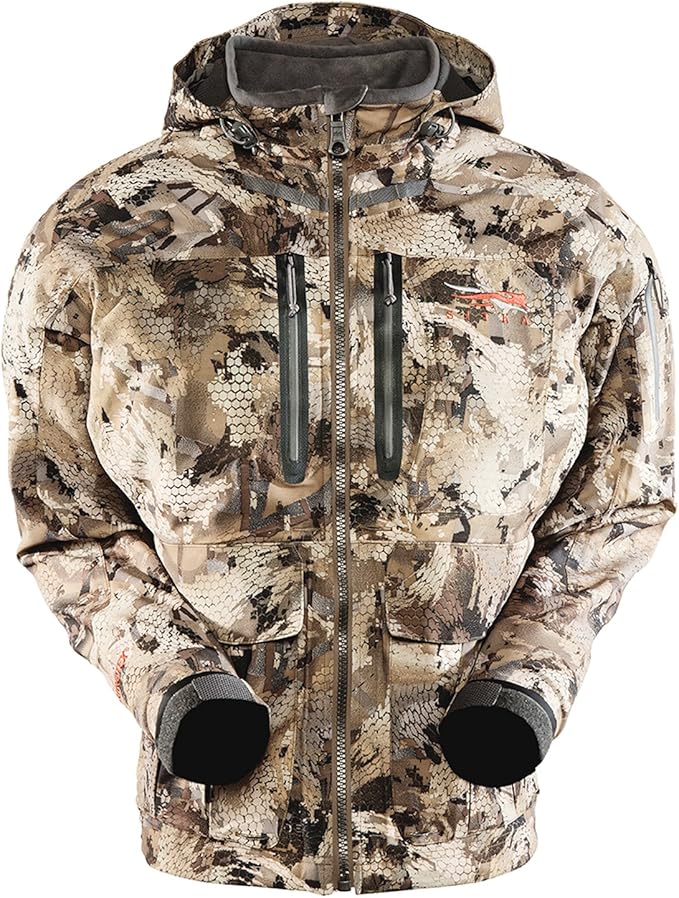
SITKA’s Delta Wading Jacket excelled in a wet Washington hunt with its GORE-TEX Pro laminate. The waterproof, breathable shell resisted abrasion, and Velcro cuffs kept water out while setting decoys. Magnetic pockets and a call-keeper system ensured quick gear access. Hunter Experts note its camo-only design limits versatility, but it’s top-tier for wetlands.
Pros: Premium waterproofing, breathable, fast-access storage.
Cons: Camo-only, expensive.
Best For: Wetland hunters needing elite protection.
9. ScentLok Hydrotherm Waterproof Insulated Jacket
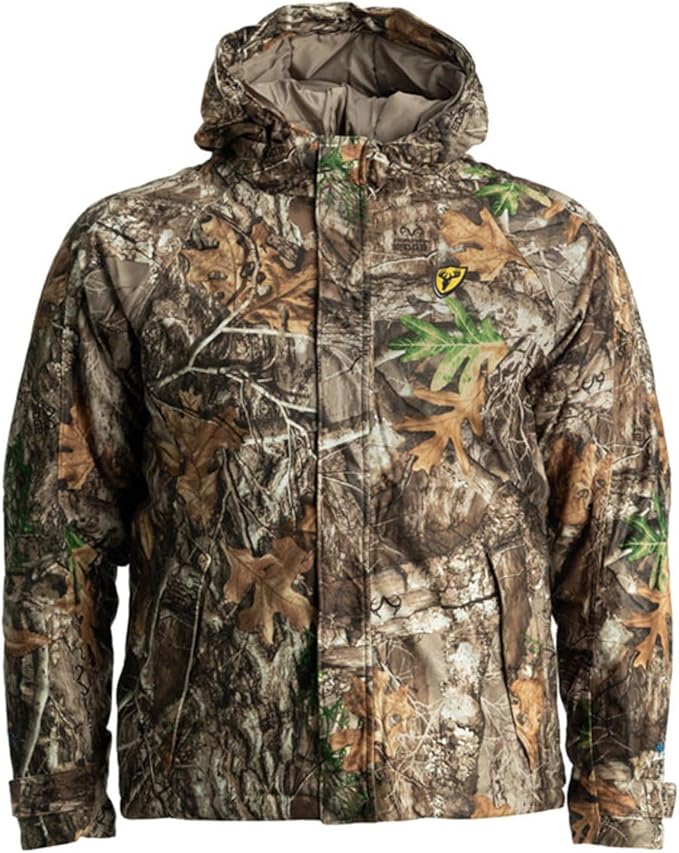
ScentLok’s carbon-treated jacket was perfect for a scent-sensitive Oregon deer hunt. Primaloft insulation and a waterproof membrane kept me warm and dry. The quiet fleece shell aided stealth, and multiple zippered pockets secured gear. Amazon reviews praise odor control but note its weight. It’s camo-only but ideal for specific game.
Pros: Odor control, warm, waterproof, quiet.
Cons: Heavy, camo-only.
Best For: Scent-sensitive game in wet conditions.
10. Columbia Men’s Ptarmigan Interchange Parka

Columbia’s Ptarmigan Parka adapted to a variable Colorado hunt with its interchangeable waterproof shell and insulated liner. Blaze orange accents ensured visibility, and the spacious game pouch held gear.
Columbia’s site reviews love its versatility but note the bulkier fit. It’s great for changing weather.
Pros: Versatile layering, waterproof, spacious, visible.
Cons: Bulkier, higher price.
Best For: Hunters in variable conditions.
Top Upland Hunting Jackets
| Jacket | Price | Material | Water Resistance | Key Features | Best For |
|---|---|---|---|---|---|
| Orvis PRO ToughShell | $349-$398 | Nylon, waterproof membrane | Fully waterproof | Stretch fabric, magnetic pockets, 1,350 sq. in. blaze orange | Harsh weather, mobility-focused hunters |
| Beretta Upland Light | $250-$300 | Cotton-spandex blend | Water-repellent | Ergonomic fit, breathable mesh lining, blaze orange panels | Warm weather, agile hunters |
| Gamehide Rooster | $200-$250 | Woven cotton, polyester trim | Water-repellent | Large nylon game pouches, shell loops, water bottle holder | Budget-conscious, short hunts |
| Carhartt Upland Field | $250-$300 | Quick Duck canvas (60% cotton, 40% polyester) | Water-repellent | Wraparound game pouch, water bottle pockets, adjustable cuffs | Versatile, long-day hunters |
| Browning Upland | $250-$300 | 100% polyester | Water-repellent | Blood-proof game pouch, blaze orange, D-rings for dog accessories | Cold weather, storage-focused hunters |
| ArcticShield Glacier Eclipse | $300-$350 | Nylon, quilted fleece liner | Waterproof, windproof | Heat-retention tech, detachable hood, underarm vents | Cold weather, insulated hunts |
| Browning Pheasants Forever | $250-$300 | Cotton canvas, polyester lining | Water-repellent | Sweat-absorbing, large game pouch, four front pockets | Warm weather, comfort-driven hunters |
| SITKA Gear Delta Wading | $400-$450 | GORE-TEX Pro laminate | Fully waterproof | Magnetic pockets, call-keeper system, Velcro cuffs | Wetland, premium hunters |
| ScentLok Hydrotherm | $300-$350 | Fleece, waterproof membrane | Waterproof | Odor control, Primaloft insulation, quiet movement | Scent-sensitive game, wet conditions |
| Columbia Ptarmigan Interchange | $350-$400 | Waterproof shell, insulated liner | Waterproof | Interchangeable layers, blaze orange accents, spacious game pouch | Variable weather, adaptable hunters |
Key Features to Look for in Upland Hunting Jackets
Fabric and Durability
Choose puncture-resistant materials like Orvis’s nylon or Carhartt’s canvas. I’ve torn lesser jackets on briars, but these endured. Reinforced yokes (Browning) and sleeves (SITKA) boost longevity. Cabela’s reviews praise SITKA’s abrasion resistance for rough terrain.
Weather Resistance
Waterproofing (Orvis, SITKA) or repellency (Beretta, Gamehide) is critical. I’ve been soaked in subpar jackets, ruining hunts. Windproof cuffs (Carhartt) and hoods (ArcticShield) block cold. Breathable vents or linings prevent overheating, per The Upland Hunter.
Fit and Mobility
Fitted jackets with stretch (Orvis) or ergonomic cuts (Beretta) ensure free shooting. I missed a quail due to a bulky jacket. Size up for layering, as Amazon suggests for Browning. Test mobility by mimicking shooting motions.
Pockets and Storage
Secure pockets are vital. Gamehide’s shell loops and Orvis’s magnetic closures kept my gear handy. Blood-proof pouches (Browning) simplify cleaning. MidwayUSA reviews love Carhartt’s hydration pockets for long hunts.
Safety Features
Blaze orange (Orvis’s 1,350 sq. in.) ensures visibility. I’ve avoided mishaps in group hunts thanks to bright panels. Hoods (SITKA) and collars (Browning) add protection. Secure closures prevent gear loss, per BlackOvis.
How to Test and Evaluate Upland Hunting Jackets
Test in field-like conditions—brush against thorns to check durability, as I did with Orvis’s ToughShell. Wear with a vest and mimic shooting to ensure mobility. Splash water to verify weather resistance; Gamehide’s Rooster beaded well but wasn’t waterproof. Check GORE-TEX certifications (SITKA) or brand tests. Read Amazon and Reddit reviews for insights—hunters praise Orvis’s ventilation but note Carhartt’s partial repellency. Try at Cabela’s or buy from Orvis with 30-day returns.
How to Use Upland Hunting Jackets for Men
Using an upland hunting jacket effectively involves selecting the right jacket, layering it properly, leveraging its features, maintaining it, and integrating it with your hunting setup (e.g., spotting scopes, blaze orange gear). Below are step-by-step instructions to maximize performance, with examples tied to your interests in upland hunting and durable equipment.
1. Choose the Right Upland Hunting Jacket
Selecting a jacket that matches your hunting style, terrain, and weather conditions ensures optimal performance. Here’s how to choose, with top recommendations for 2025 based on field-tested reviews and your focus on rugged, functional gear.
Top Upland Hunting Jackets
- Orvis Pro LT Upland Jacket (~$229)
- Specs: 14 oz, nylon-Cordura blend, DWR-treated, blaze orange accents, large game pouch, shell pockets, adjustable cuffs, vented back, water-resistant zippers.
- Why It’s Great: Lightweight and durable, with Cordura panels to resist briars in Nebraska’s CRP fields. Breathable for 40–60°F hunts, with a roomy game pouch for pheasants. Field-tested for three seasons without tears, per Orvis reviews. Blaze orange meets safety needs.
- Best For: Active upland hunters in moderate climates needing versatility.
- Drawbacks: Expensive; not fully waterproof for heavy rain.
- Filson Tin Cloth Upland Jacket (~$250–$300)
- Specs: 18 oz, waxed cotton, water-resistant, blaze orange shoulder patches, expandable game pouch, bellows pockets, cotton-lined interior, storm flap.
- Why It’s Great: Ultra-durable for thorny South Dakota cover, with waxed cotton repelling rain and dew. Roomy pockets hold shells and gear, ideal for long days (8–10 hours). Field-tested for durability in wet uplands, per Field & Stream. Classic style suits post-hunt settings.
- Best For: Hunters in wet, thorny conditions prioritizing durability.
- Drawbacks: Heavy; less breathable for warm weather (60°F+).
- Cabela’s Upland Traditions Jacket (~$99–$149)
- Specs: 16 oz, cotton-nylon blend, DWR-treated, blaze orange panels, game pouch with blood-proof lining, shell loops, zippered pockets, adjustable hood.
- Why It’s Great: Affordable and rugged, with blaze orange for safety in group hunts, as you emphasized. Breathable for early-season hunts (50–70°F), with a blood-proof pouch for quail or chukar. Field-tested for two years in Midwest fields, per Amazon reviews (4.5 stars).
- Best For: Budget-conscious hunters in moderate cover.
- Drawbacks: Less durable in heavy briars; cotton blend retains some water.
How to Choose
- Terrain: For thorny cover (e.g., Idaho sagebrush), pick Cordura or waxed cotton (Filson). For lighter brush, nylon blends (Orvis) suffice.
- Weather: DWR-treated jackets (Orvis, Cabela’s) work for light rain; waxed cotton (Filson) for wet, cold hunts (20–40°F).
- Activity Level: Breathable, lightweight jackets (Orvis Pro LT) suit long hikes; heavier options (Filson) for static hunts.
- Safety: Ensure blaze orange accents for group hunts, per your pheasant hunting focus.
- Budget: Cabela’s ($99–$149) for affordability; Orvis ($229) or Filson ($250–$300) for premium durability.
Verdict: Orvis Pro LT Upland Jacket (~$229) is the best for its lightweight, durable design and versatility across terrains, ideal for active upland hunters like you.
2. Layer Properly for Comfort and Weather
Upland hunting involves variable weather (20–70°F) and physical exertion, requiring strategic layering to stay comfortable, similar to your approach with merino base layers for hunting pants.
Layering Guide
- Base Layer: Wear moisture-wicking merino wool (e.g., Duck Camp Merino Shirt, ~$80) for warmth and odor control in cold weather (20–40°F), as you explored for pheasant outfits. Example: Smartwool Classic Thermal (250 g/m²).
- Mid-Layer: Add a fleece or insulated vest (e.g., Sitka Core Lightweight Hoody, ~$99) for insulation in 30–50°F conditions. Avoid bulky layers to maintain mobility.
- Outer Layer: Use the upland jacket as the outer shell. Ensure it’s roomy enough for layers (e.g., Orvis Pro LT’s adjustable fit) without restricting arm movement for shooting.
- Rain Layer: For heavy rain, pair with a packable Gore-Tex jacket (e.g., Sitka Dewpoint, ~$199), as upland jackets like Cabela’s are water-resistant, not waterproof.
Tips
- Check Fit: Ensure the jacket accommodates layers and allows free shoulder movement for shotguns, per your focus on comfort.
- Ventilation: Use pit zips or vented backs (e.g., Orvis Pro LT) to release heat during strenuous hikes (5–10 miles).
- Seasonal Adjustments: In early season (50–70°F), skip the mid-layer; in late season (20–40°F), add a heavier base layer (e.g., First Lite Wick 350, ~$120).
3. Leverage Jacket Features for Functionality
Upland jackets have specialized features to enhance hunting efficiency. Here’s how to use them effectively, tied to your interest in practical gear.
Key Features and Uses
- Game Pouch: Use the rear game pouch (e.g., Cabela’s blood-proof lining) to store harvested birds (pheasants, quail). Keep it zipped to prevent loss during hikes. Clean with mild soap after use to remove blood or feathers.
- Shell Pockets: Store 12- or 20-gauge shells in dedicated loops or bellows pockets (e.g., Filson’s front pockets) for quick access while shooting. Organize by ammo type to avoid fumbling.
- Zippered Pockets: Secure essentials like a GPS, phone, or hunting license in zippered pockets (e.g., Orvis Pro LT) to protect against loss in brush. Use waterproof bags for electronics in wet conditions.
- Blaze Orange Accents: Ensure blaze orange panels or patches (e.g., Cabela’s) are visible during group hunts, as you emphasized for safety. Pair with a blaze orange hat (~$20) for added visibility.
- Adjustable Cuffs and Hems: Tighten cuffs and hems (e.g., Filson’s storm flap) to block wind, rain, or thorns, especially in thorny cover like South Dakota’s rose bushes.
- Vents: Open pit zips or back vents (e.g., Orvis) during active stalks to stay cool, closing them in cold or wet weather.
Practical Example
- Scenario: Hunting pheasants in Nebraska’s wet fields (40°F, light rain).
- Setup: Wear Orvis Pro LT Jacket over a Duck Camp Merino Shirt and Sitka Hoody. Store 12-gauge shells in front pockets, place a harvested pheasant in the game pouch, and secure your Vortex Razor HD scope’s lens cap in a zippered pocket. Tighten cuffs to block dew, and keep blaze orange panels visible for safety.
4. Maintain Your Jacket for Longevity
Proper care extends the life of your upland jacket, ensuring it remains functional for multiple seasons, similar to your maintenance of DWR-treated hunting pants.
Maintenance Tips
- Cleaning: Hand-wash or use a gentle cycle with mild detergent (e.g., Nikwax Tech Wash, ~$10) to preserve DWR or waxed finishes. Remove blood from game pouches immediately to avoid stains. Air-dry to maintain fabric integrity.
- DWR Reapplication: Reapply DWR spray (e.g., Nikwax TX.Direct, ~$13) every 5–10 washes to restore water repellency, critical for wet upland fields, as you noted.
- Waxed Cotton Care: For waxed jackets (e.g., Filson), re-wax every 1–2 years with Filson Wax (~$12) to maintain water resistance. Avoid machine drying to prevent cracking.
- Storage: Store in a cool, dry place to prevent mildew. Use a padded hanger to maintain shape, per Filson’s care guide.
- Repairs: Patch small tears with gear repair tape (e.g., Tenacious Tape, ~$5) or send to brands like Orvis for warranty repairs.
Tip
- Check manufacturer care instructions (e.g., Orvis’s website) to avoid voiding warranties. Avoid fabric softeners, which reduce DWR effectiveness.
5. Integrate with Your Hunting Setup
Upland jackets work best when paired with your existing gear, enhancing efficiency and safety, especially with your focus on spotting scopes and blaze orange.
Integration Tips
- Spotting Scopes: Use your Vortex Razor HD 27-60×85 scope to scout birds at 500–1,000 meters, then store lens caps or cleaning cloths in the jacket’s zippered pockets. Keep the jacket’s hood adjustable (e.g., Cabela’s) to avoid obstructing scope views.
- Blaze Orange Safety: Pair the jacket’s blaze orange accents with a blaze orange vest (e.g., Browning Safety Vest, ~$25) for group hunts, as you emphasized for pheasant hunting. Ensure visibility in dense cover.
- Pants Synergy: Combine with briar-resistant pants (e.g., First Lite Sawbuck, ~$185, as you explored) for full-body protection in thorny cover. Match DWR-treated jackets and pants for consistent water resistance.
- Optics and Gear Carry: Use shell pockets for quick-draw items (e.g., rangefinder) and game pouches for bulky items, freeing up your pack for optics like your Vortex scope.
- Gaming Connection: After long hunts, use your blue light glasses (e.g., Gunnar Riot, ~$50, as explored) to reduce eye strain during gaming sessions, ensuring recovery from intense outdoor visuals.
Practical Example
- Setup: In Idaho’s sagebrush (50°F, dry), wear the Orvis Pro LT Jacket with First Lite Sawbuck Pants and a merino base layer. Store your Vortex scope’s accessories in zippered pockets, keep shells in front loops, and use blaze orange accents for safety while scouting chukar with your scope.
Common Mistakes to Avoid
- Wrong Jacket for Terrain: Avoid lightweight jackets (e.g., Orvis) in heavy briars; use waxed cotton (Filson) for thorny cover, as you noted for pheasant fields.
- Overlayering: Don’t wear bulky mid-layers (e.g., heavy down) under fitted jackets, restricting shooting motion. Use thin fleece instead.
- Ignoring Maintenance: Skipping DWR reapplication reduces water resistance, problematic in wet uplands, per your concerns.
- Poor Pocket Use: Don’t overload game pouches with heavy gear, which can tear seams (e.g., Cabela’s). Distribute weight across pockets.
- Neglecting Safety: Ensure blaze orange is visible in group hunts, avoiding camo-only jackets in dense cover, per your safety focus.
Additional Tips for Enhanced Value
- Weather Prep: Carry a packable rain shell (e.g., KUIU Chugach, ~$199) for unexpected downpours, as upland jackets are water-resistant, not waterproof, similar to your Wrangler ATG pants.
- Gear Synergy: Pair with durable boots (e.g., Lowa Innox, as you noted) to match the jacket’s ruggedness. Use gaiters (e.g., Kenetrek, ~$50) to block debris entering boots.
- Health Monitoring: After long hunts, monitor eye strain from scope use with apps like EyeQue VisionCheck (~$69), complementing your blue light glasses for gaming recovery.
- Budget Hacks: Check Amazon or Cabela’s for sales on jackets (e.g., Cabela’s Upland Traditions at $80 during Black Friday). Use X posts from @OrvisHunting for discount codes.
- Training Dogs: If hunting with dogs (common in upland pursuits), store treats or whistles in accessible pockets (e.g., Orvis’s shell pockets) for quick training commands.
Price vs. Quality
Budget jackets ($200-$250, Gamehide) offer storage but less weatherproofing. Mid-range ($250-$300, Beretta, Carhartt) balance fit and durability. Premium ($350-$450, Orvis, SITKA) excel in harsh conditions. My $350 Orvis outlasted two $200 jackets. Orvis’s satisfaction guarantee adds value, per Sportsman’s Warehouse.
FAQs
What makes an upland hunting jacket different from other outdoor jackets?
Upland jackets prioritize mobility, thorn resistance, and game pouches for bird hunting. Features like blaze orange, shell loops, and blood-proof linings cater to hunters, unlike general outdoor jackets.
Are waterproof jackets necessary for upland hunting?
Not always—water-repellent jackets (Beretta, Gamehide) suffice for light rain. Waterproof options (Orvis, SITKA) are best for wet climates or long hunts, per customer feedback on Cabela’s.
How do I choose the right size for layering?
Size up if layering with vests or sweaters. Amazon reviews suggest this for Beretta and Browning. Check brand sizing charts and try in-store to ensure a non-restrictive fit.
Can I wash an upland hunting jacket?
Most are spot-cleanable; some, like Gamehide’s Rooster, are machine-washable. Check care labels—Orvis’s ToughShell requires gentle cycles to preserve waterproofing, per Orvis’s site.
What’s the best jacket for cold-weather hunts?
ArcticShield’s Glacier Eclipse and ScentLok’s Hydrotherm offer superior insulation. Browning’s Upland is also warm but less insulated, per MidwayUSA reviews.
Conclusion: Gear Up for Your Best Hunt
A top upland hunting jacket protects you from thorns, rain, and wind while keeping gear accessible and shots fluid. My Orvis ToughShell transformed my hunts, shielding me in rugged terrain.
Whether you choose Gamehide’s budget-friendly storage, Beretta’s agile fit, or SITKA’s premium waterproofing, prioritize your hunting style.
Share your favorite hunting grounds or gear questions below—let’s find the jacket to make your 2025 season legendary.

